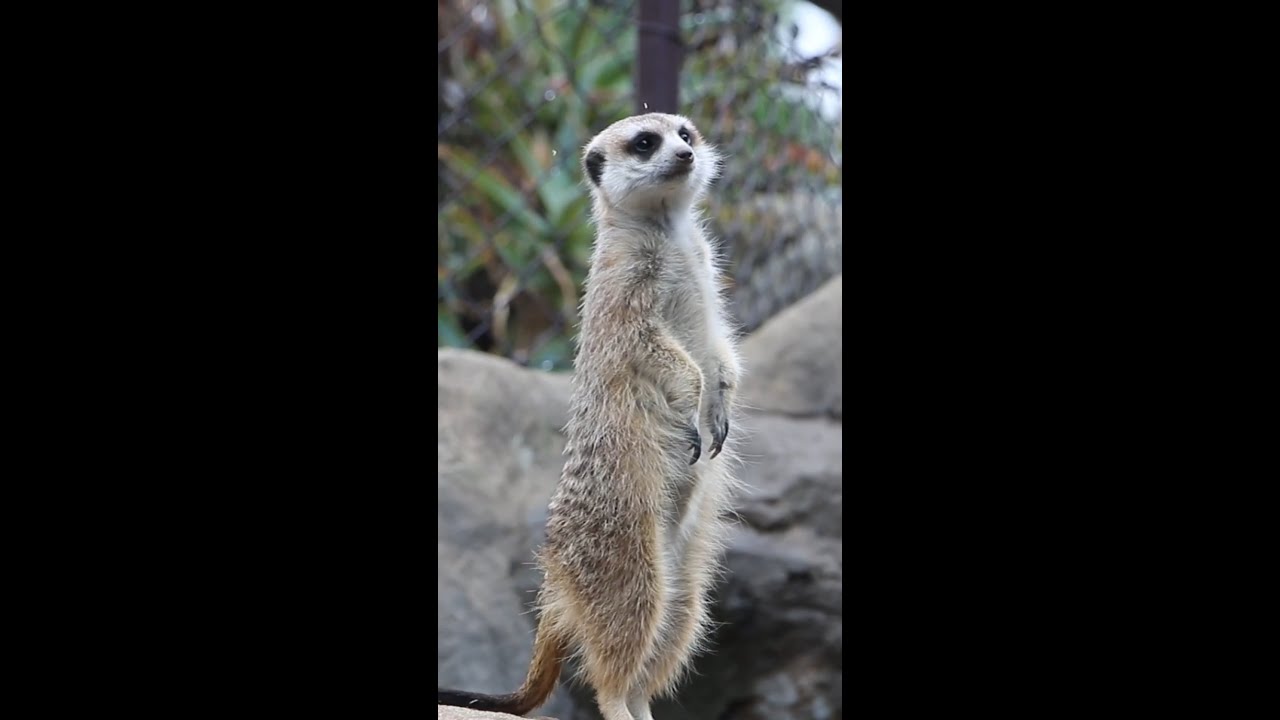– Discover the dynamic social world of meerkats
– Learn about the essential roles within a meerkat mob
– Explore the fascinating adaptations that make meerkats desert survivors
– Understand the importance of conservation efforts for these charismatic creatures
There’s never been a more exciting time to delve into the world of one of our planet’s most endearing and socially complex creatures. That’s right, we’re talking about meerkats, and today marks the celebration of our very first Meerkat Monday of the year.
A journey into the lives of these remarkable animals offers a window into an intricate society where each member plays a critical role in the group’s survival. Meerkats are not just critters that stand on their hind legs and look cute for the camera. Their existence is synonymous with cohesive teamwork and exceptional adaptability.
Let’s begin by visualizing southern Africa’s vast, arid landscapes, where the sun blazes down, creating a labyrinth of shadows over the Kalahari Desert. This harsh environment is home to the Meerkat, officially known as Suricata suricatta, a member of the mongoose family. It might be tough to imagine this scorching, seemingly barren land as teeming with life, but the Meerkat thrives here with a resilience that defies the relentless climate.
The key to their success lies in their cooperative society, aptly called a ‘mob’, ‘gang’, or ‘clan’, typically containing 20-50 individuals. Observing their interactions is like watching a well-orchestrated ballet of roles, each with critical responsibilities. The sentry, for instance, acts as the mob’s lookout, perched high on a termite mound or a clump of bush, with keen eyes scanning for predators such as eagles, snakes, or jackals. The group’s safety is paramount, and the watchful gaze of the sentry plays a crucial part in safeguarding their lives.
On the ground, other members forage for food. Their diet is primarily insectivorous, but don’t let their small size fool you. These hunters will tackle scorpions and small reptiles when the opportunity arises. Watching a meerkat dig is to witness a master at work. Their foreclaws are natural shovels, perfectly designed to move sand and soil at a dizzying pace. It’s an absolute marvel, a pinnacle of evolutionary craftsmanship.
An aspect of meerkat life that often goes unnoticed is their complex communication. It’s a symphony of chirps, barks, and purrs, each conveying a specific message, from alerting each other about the approach of predators to coordinating the group’s daily activities. Researchers have spent countless hours deciphering these vocalizations, giving us a glimpse into the cognitive abilities of these small mammals.
At the heart of the mob is a breeding pair, often referred to as the alpha pair, who predominantly produce the offspring for the group. Here again, their social structure shines. Subordinate members act as caregivers to the young pups, teaching them essential survival skills and even providing them with regurgitated food. It’s a testament to the Meerkat’s cooperative spirit, a trait that could teach humanity a lesson or two about community and coexistence.
Meerkats are also exemplary for their ability to adapt to extreme temperatures. Their caves, an underground network of tunnels, provide refuge from the midday sun and the cold desert nights. A single clan might maintain multiple dens across their territory, ensuring shelter is always within reach.
As with many of the Earth’s creatures, meerkats face threats from habitat loss and human encroachment. However, conservation efforts and research are vital in ensuring the continuation of their species. Protected areas have become sanctuaries, and continued study affords us the knowledge to mitigate conflicts between meerkats and humans.
But why should we care about these small, seemingly insignificant creatures? The answer is simple. Meerkats play a crucial role in their ecosystem. They help control the populations of insects and other small animals, maintaining a balance within their desert home. Additionally, their very presence in popular culture has sparked interest and love for wildlife among people worldwide.
How can we contribute to the welfare of meerkats and their environment? First, we should support conservation efforts and be aware of our global impact. Meerkat Monday is more than just a celebration; it’s a call to action, an opportunity to spread awareness about these animals and their challenges.
So, on this Meerkat Monday, let us marvel at the meerkats’ tenacity, complex social hierarchy, and ecological importance. Let us be captivated by their charismatic nature, which has the power to touch hearts and minds, fostering a deep appreciation for the natural world.
In closing, let us remember the significance of today. Meerkat Monday isn’t only about meerkats; it’s about recognizing the beauty and intricacy of all wildlife. It’s a reminder that each species, no matter how small or seemingly unimportant, holds a place in the intricate web of life. Meerkats are simply a snapshot of the majesty and diversity we will lose if we don’t commit to preserving our planet.
Each one of us can make a difference in the lives of these fascinating animals, be it through education, support for wildlife organizations, or simply sharing the stories and struggles of the Meerkat with others. Let their story be the motivator for change, a driving force for conservation, and a beacon of hope for our global biodiversity.
As the sun sets over the Kalahari, casting a warm glow over the sands that these creatures call home, we can take solace in the knowledge that countless dedicated individuals are working tirelessly to ensure that future generations will continue to be enchanted by the Meerkat’s playful antics and extraordinary social way of life. May the spirit of Meerkat Monday inspire us to join them in their efforts, making every day a celebration of these and all of Earth’s magnificent creatures.
*****
Source Description
It’s our first #MeerkatMonday of 2024! 🤩 Enjoy.

